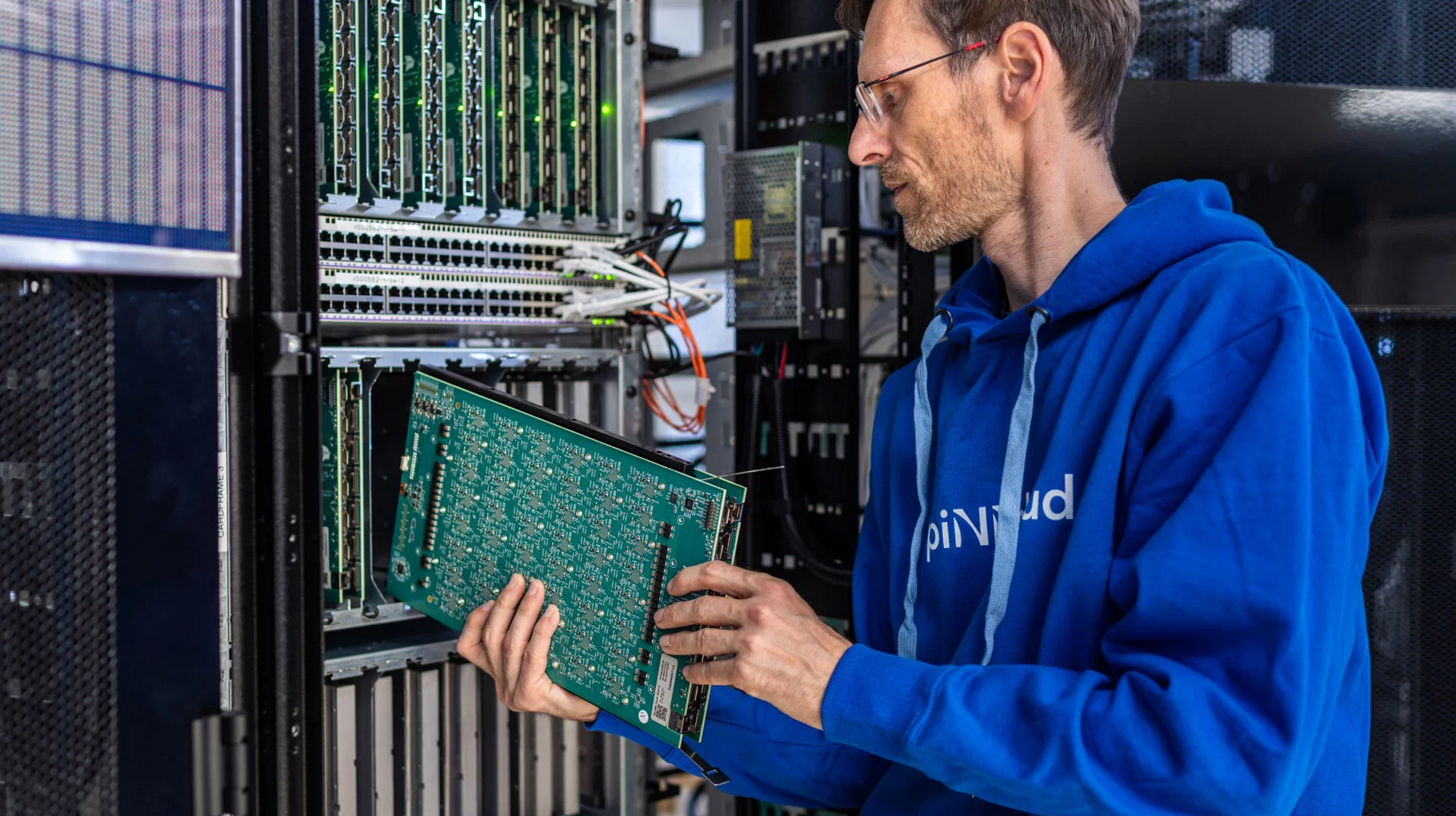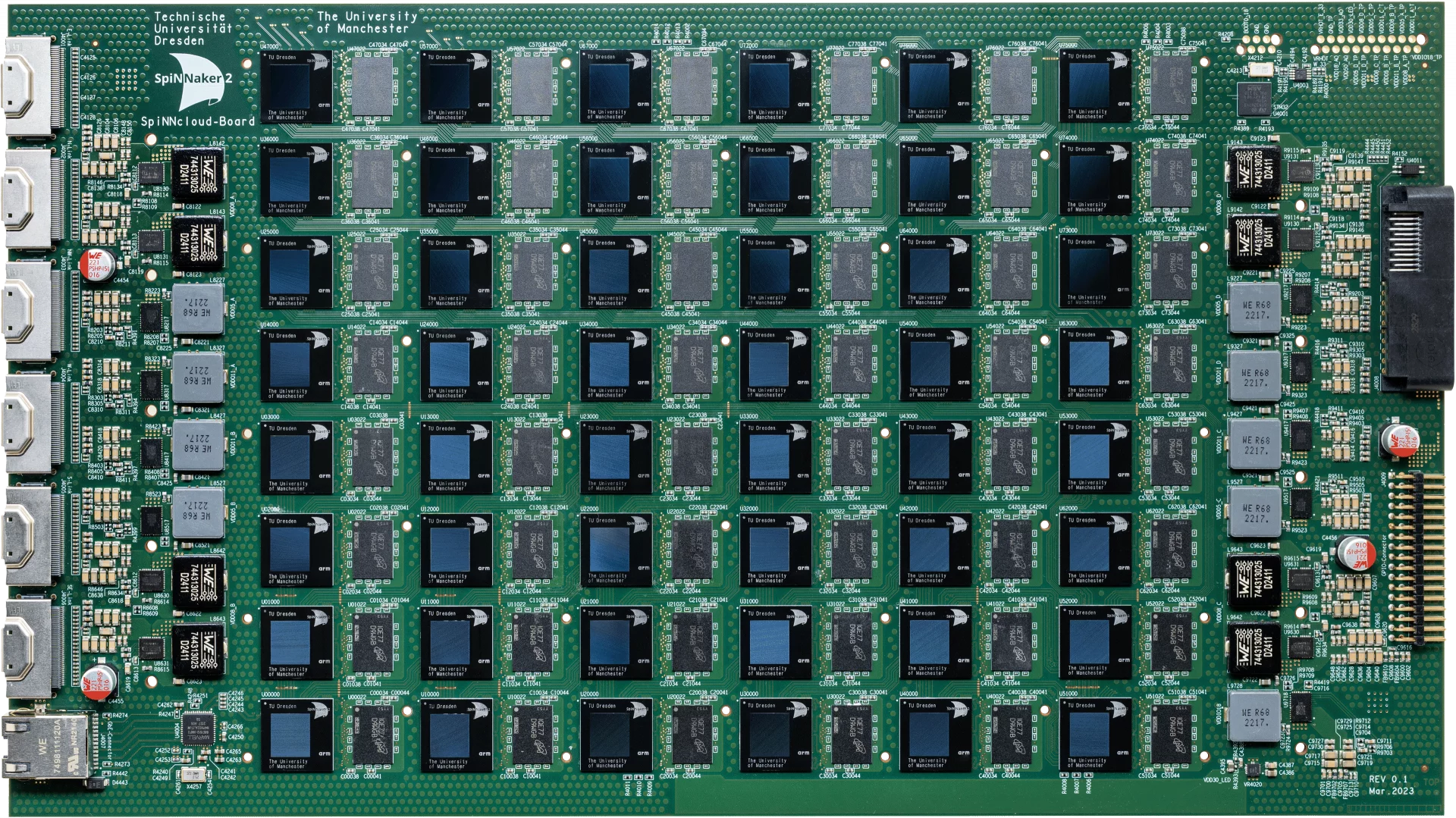'Brain-inspired' supercomputer with no GPUs or storage switched on — SpiNNaker 2 mimics 150-180 million neurons
The new supercomputer features 175,000 CPU cores.

Sandia National Laboratories has allegedly activated its own SpiNNaker 2 server, a brain-inspired supercomputer comprising thousands of ARM-based CPU cores that don't require SSDs, hard drives, or GPUs. Blocks and Files reports the new supercomputer will rank among the top five brain-inspired platforms worldwide.
Sandia is reportedly utilizing a 24-board version of the SpiNNaker 2 architecture, featuring a total of 175,000 cores. Each board reportedly carries 96GB of LPDDR4 memory, giving the system 2.3TB of memory and 23GB of integrated on-chip SRAM storage.

SpiNNaker 2, or Spiking Neural Network Architecture 2, is a computer architecture inspired by the human brain — mimicking the actions of neurons and synapses (and is a form of Neuromorphic computing). The architecture relies on dozens of motherboards, each featuring nearly 50 ARM CPUs, all communicating via a vast web of interconnects. This design choice prioritizes boosting computational efficiency over maximizing raw performance through brute force methods, which is common in today's mainstream AI processors/GPUs (such as Nvidia's B200).
SpiNNaker's unique design also affords it so much memory and SRAM storage that it doesn't require any dedicated storage. Anything and everything the server is working on is stored permanently in the server's LPDDR4 memory and SRAM.
The second version of SpiNNaker represents a significant upgrade over its predecessor, achieving a 10-fold increase in core count compared to SpiNNaker 1. Other upgrades include the transition to a 22nm FD-SOI (22FDX) manufacturing process, adaptive body biasing for near-threshold voltage operation, workload dynamic voltage and frequency scaling, and accelerated and customized chip-to-chip interconnects.
SpiNNaker is capable of processing large-scale hybrid AI models, as well as biological neural simulations and whole-brain modeling, with its unique design. It is also highly scalable, with a machine in Dresden allegedly projected to incorporate over 720 motherboards, totaling 5.2 million CPU cores once complete.
Stay On the Cutting Edge: Get the Tom's Hardware Newsletter
Get Tom's Hardware's best news and in-depth reviews, straight to your inbox.

Aaron Klotz is a contributing writer for Tom’s Hardware, covering news related to computer hardware such as CPUs, and graphics cards.
-
Sippincider Wait, Brain-inspired??Reply
"What are we going to do tonight, Brain?"
"The same thing we do every night, Pinky… try and take over the world!" -
lemongrassgarlic Looking at the first picture , apparently the supercomputer boards don't suffer from ESD.Reply -
YSCCC Well, an interesting approach, but hey, my dumb brain is a brain and Einstein's brain is a brain, brain differs a lot alsoReply -
rluker5 Seems to trail last year Intel pretty badly: https://www.anandtech.com/show/21355/intel-and-sandia-national-laboratories-roll-out-hala-point-neuromorphic-research-systemReply
But the efficiency seems greatly improved over the original Spinnaker that needed over 33x the power of the Intel system to run a bit slower.